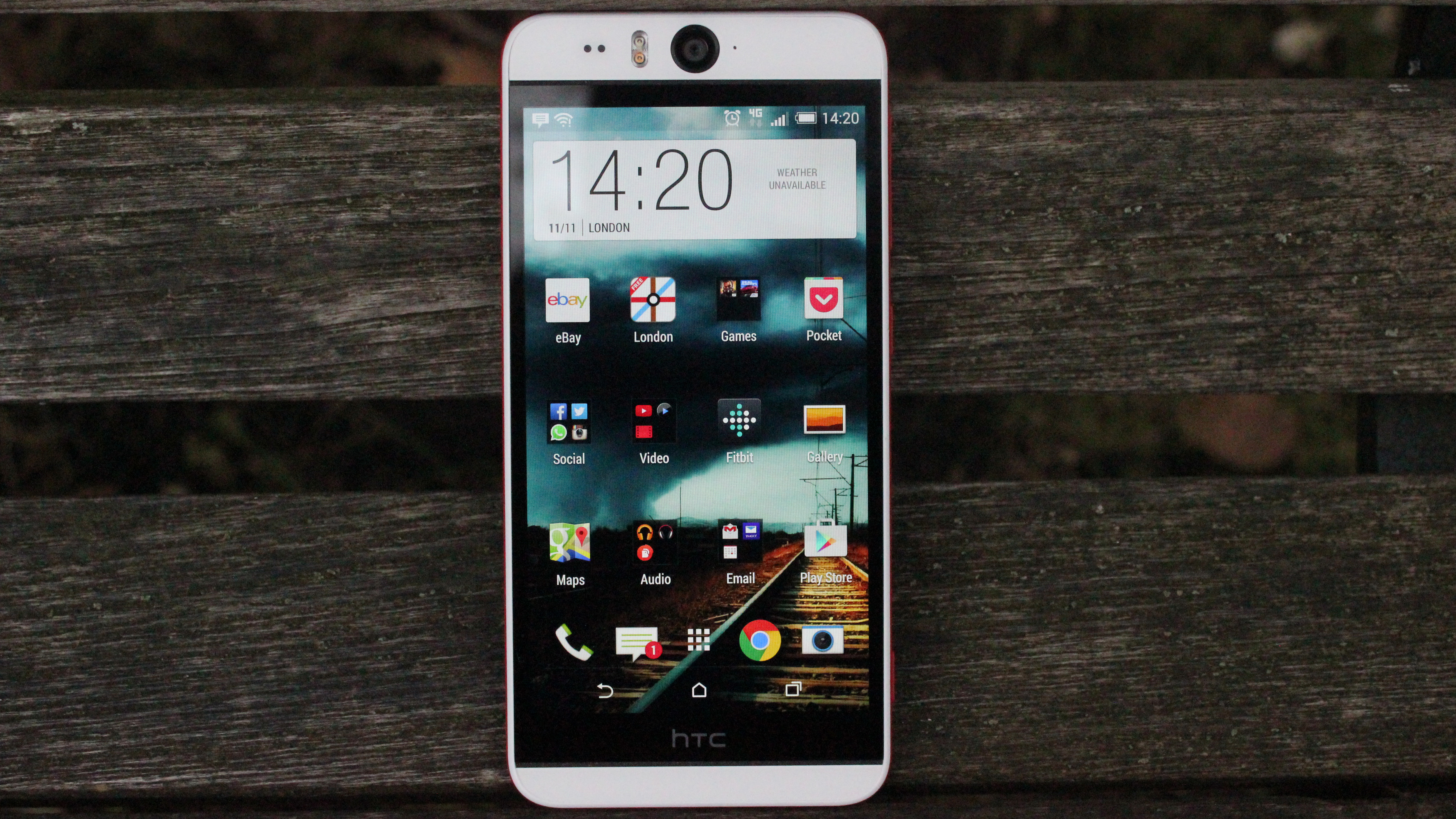TechRadar Verdict
The strength of the Desire Eye isn't in its 13MP cameras but its unibody design and flagship-baiting specifications. The excellent screen and front-facing speakers mean this handset punches above its weight.
Pros
- +
Excellent design
- +
Bright, crisp screen
- +
BlinkFeed and BoomSound
- +
Dedicated shutter button
Cons
- -
Average cameras
- -
Too big
- -
Only 16GB storage
- -
Mediocre battery life
Why you can trust TechRadar
It's pretty clear from the outset that HTC is targeting the Desire Eye at the selfie-loving young 'uns that might not have the means for an HTC One M8 or an iPhone 6. The front-facing 13MP camera is given top billing as HTC proclaims this the ultimate selfie phone.
HTC is no stranger to pioneering mobile photography. The Taiwanese company came up with UltraPixels for the original HTC One and then the Duo depth sensor for the One M8. There's a clearly identifiable trend with selfies, so it's no surprise HTC wants to grab a piece of the action.
Other manufactures have tried similar tricks. Samsung and Sony brought out the Galaxy Grand Prime and Xperia C3 earlier this year each marketed on the strength of their selfies. But HTC has gone one better and is determined to prove it.
Photography may be what HTC uses to lure you in but even though this is a Desire phone, it still boasts some pretty impressive components. There's a full HD 5.2-inch screen, a Snapdragon 801 processor with 2GB of RAM and of course the 13MP cameras with dual LED flash. These kinds of specs make me question where the phone sits in HTC's line up, as on paper they put it square with the HTC One E8.
What I'm trying to say is that this is a good deal for the £350 ($550, AU$640) HTC is asking for. In the UK, you'll be able to pick up the Desire Eye for £29 on a two year, £38 per month contract with all you can eat data and all you can eat minutes.
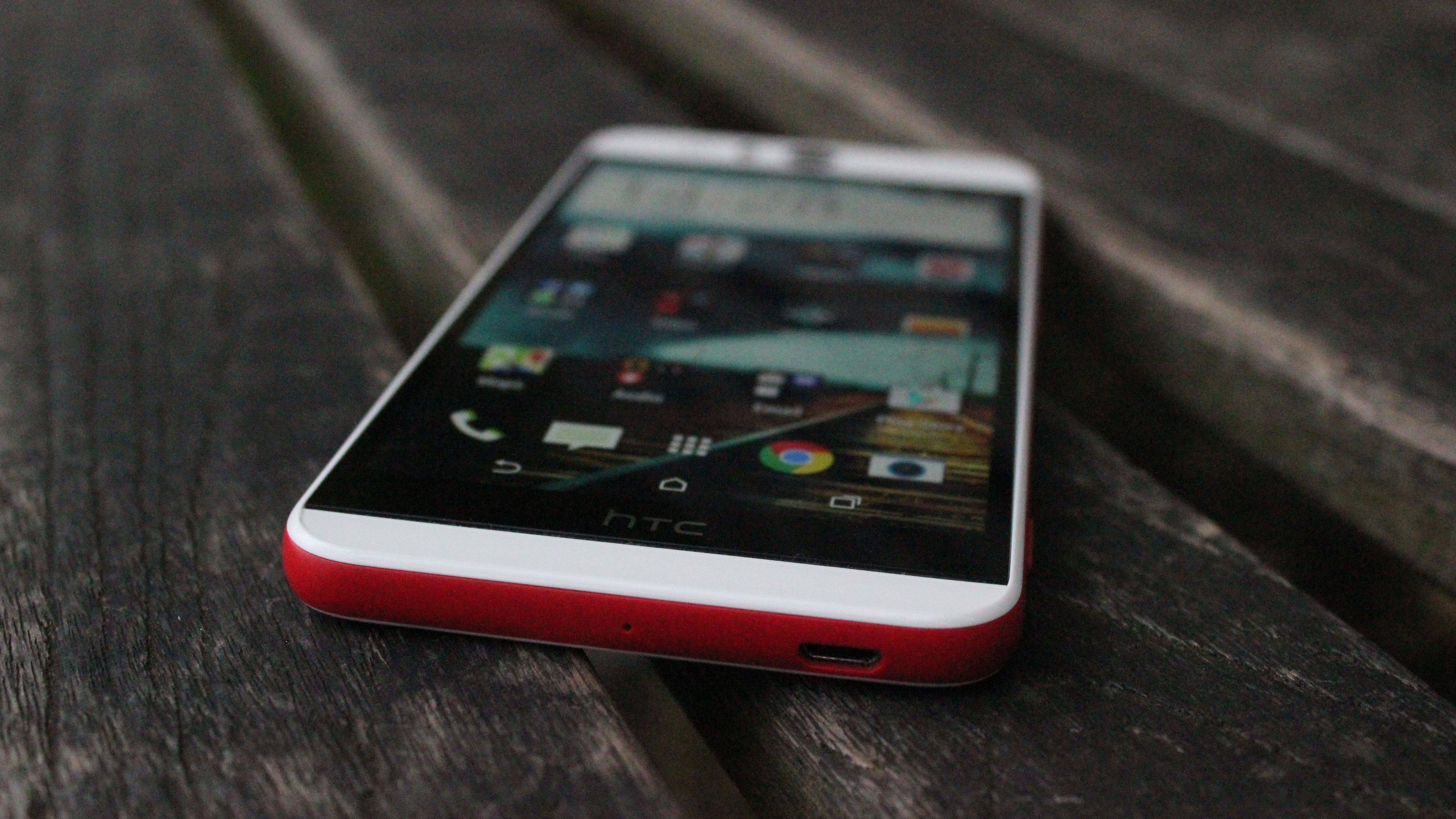
The starkest difference between the Desire and One ranges are the design materials employed. The Desire Eye doesn't boast a premium metal chassis.
Instead, it's built with a polycarbonate unibody that gives it both colour and, more importantly, IPX7 waterproofing, meaning the Desire Eye is water resistant up to 1 metre for up to 30 minutes, just don't use it while it's submerged.
Sign up for breaking news, reviews, opinion, top tech deals, and more.
Just because it's not metal, doesn't mean there's not as much quality in the craftsmanship of the Desire Eye. The polycarbonate body is matte and soft to the touch and feels really sturdy.
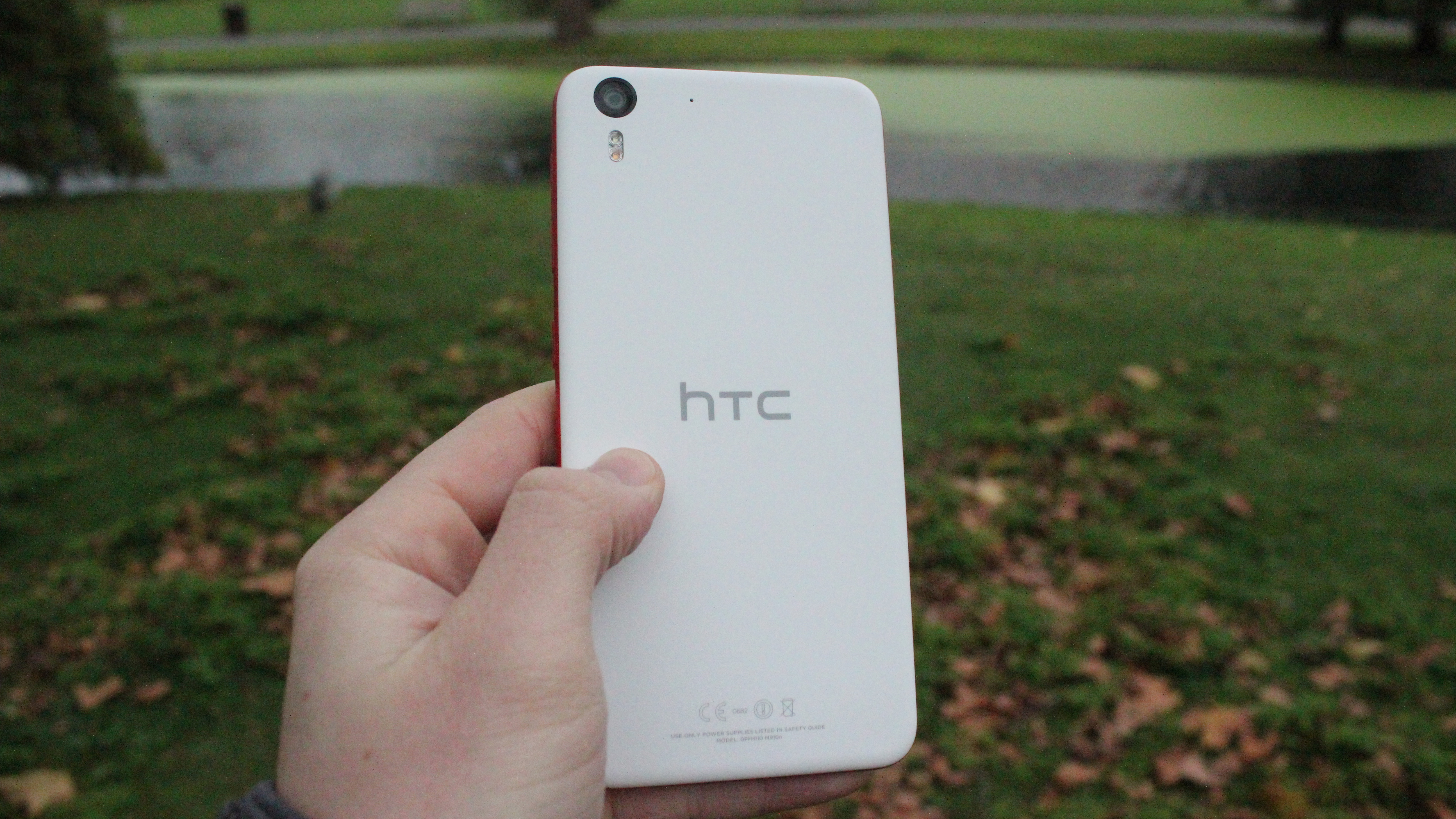
Also, with a 5.2-inch screen, the Desire Eye is a big phone. It's larger than both the HTC One (4.7-inches) and the HTC One M8 (5-inches) and therefore won't appeal to everyone. Overall dimensions for the phone are 151.7 x 73.8 x 8.5mm and the bezels, whilst not enormous, are noticeable.
Using the HTC Desire Eye with just one hand is very tricky and I couldn't reach my thumb across to the other side of the screen while typing. The silver lining to that problem is that because the Desire Eye has a solid, waterproof chassis, I didn't feel any need to add extra bulk with a shell or case for the phone.

The screen itself is a beauty though. Having a Full HD display on a phone is old news now, but I was particularly struck by the brightness of HTC's screen.
The top and bottom of the phone are free from any buttons as they're all located along the right edge of the phone. There's the volume rocker, power switch and a dedicated shutter button for the camera.
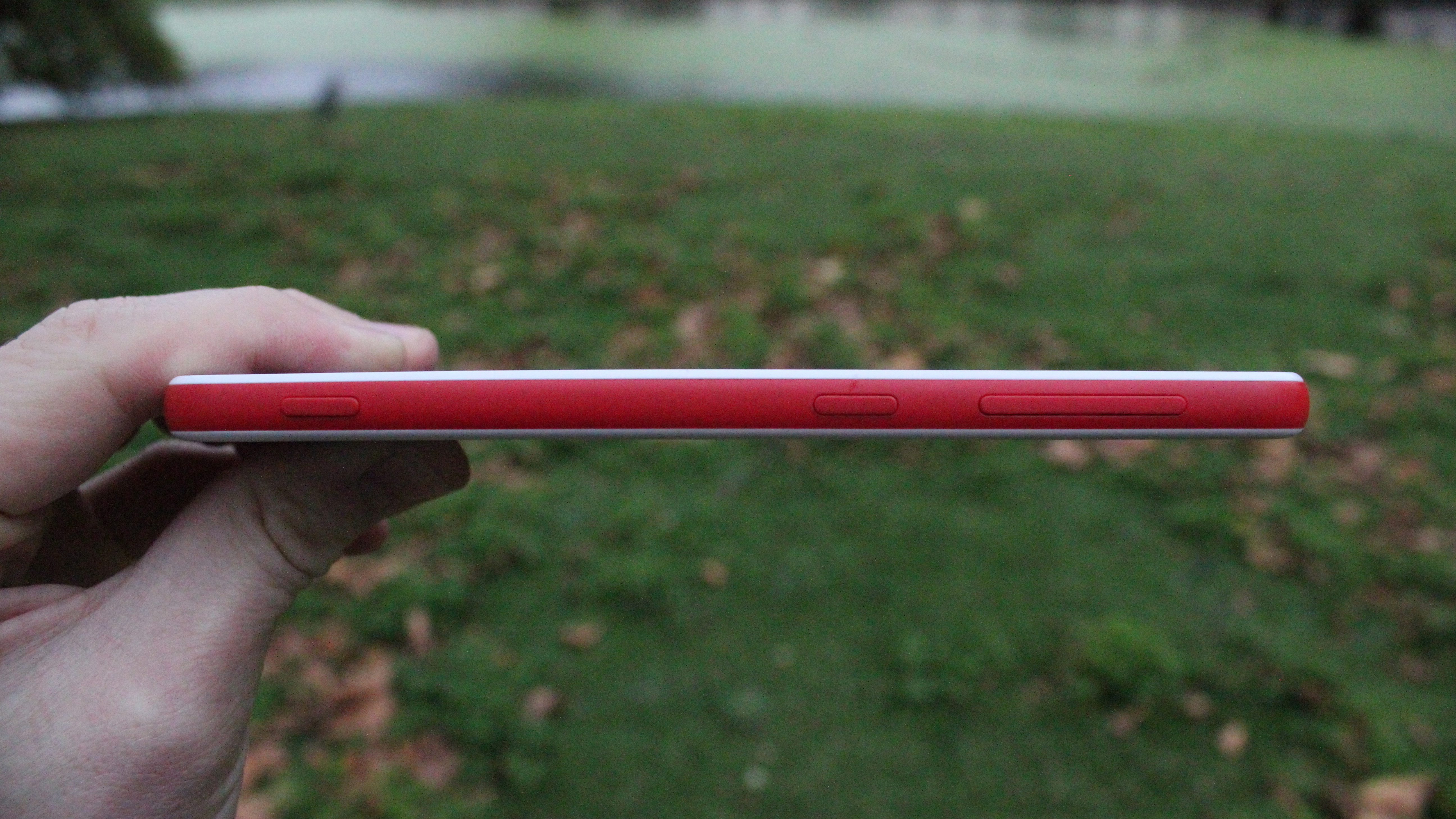
All you'll find above and below are the 3.5mm headphone jack and microUSB charging port.
On the left side of the handset are the two slots for the NanoSIM and the microSD card. As I mentioned, both of these are covered with flaps to maintain the waterproofing. They're tricky to get off, but better that than non-waterproofing in my opinion.

Even though it's really nice, there are two tiny problems with the construction. The flaps covering the SIM and microSD are the first. The second issue is that the lovely matte casing isn't very grippable. On three separate occasions the phone slipped out of my hand.
Although as a side note, the inclusion of a microSD card slot is a big plus – the Desire Eye only comes with a 16GB configuration, 7GB of which is already used by the preinstalled software.
The back of the HTC Desire Eye is clean and uninterrupted. The company has put the camera lens in the top left-hand corner, rather than centrally like on the One M8. The same isn't true on the front of the phone – HTC has put the front-facing 13MP sensor right in the middle of the top bezel.

The "Eye" moniker is fitting, this phone is constantly looking at you. Next to the lens is a small notification light that flashes when you've got an email or message. It also indicates when the phone is fully charged.
Despite the giant lens, HTC has kept its front-facing BoomSound speakers which, it's fair to say, have become a really popular feature. They're located between the black bezel and the white chassis above and below the screen.
I'll delve more into the performance of these speakers later on but suffice to say it's good to see that HTC hasn't overlooked it. My only concern is that having them sunk into the chassis means there's a possiblity for dust and grime to accumulate there.
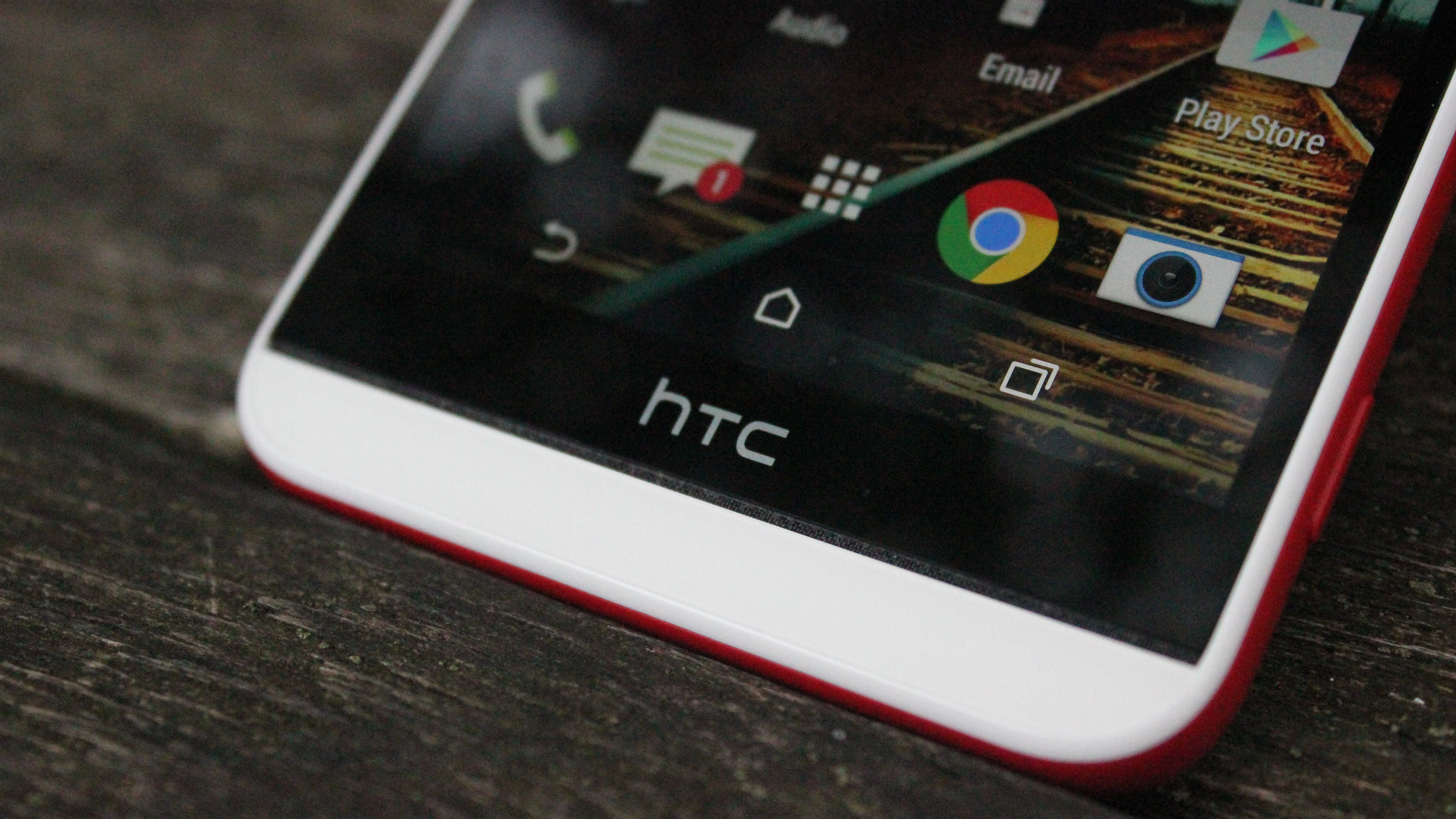
The HTC Desire Eye comes in a choice of two different colours, either the red and white of our review model or a navy/light blue blend. Both look nice although I have to admit that the white and red configuration is the one that stands out to me. HTC uses a double shot moulding process that seamlessly integrates the two colours into the one unibody design.
The Taiwanese company has constructed a really nice piece of consumer technology here. The size of the device is a subjective issue, but the build quality and durability are excellent. Even for a phone that isn't meant as a flagship device, I really feel it stands out when it comes to design.
